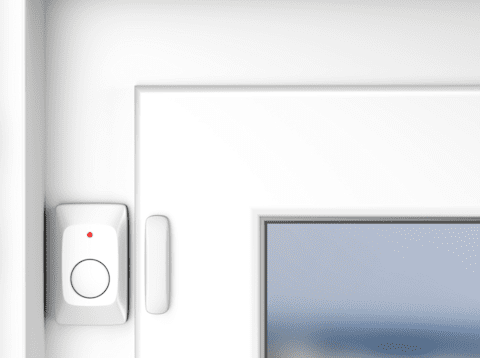Shock Sensors - GeoArm Security®
Free for orders $200 & above!
Free for orders $200 & above!
Free for orders $200 & above!
Free for orders $200 & above!
Shock Detection
for Vibration Alerts!
A shock sensor is a type of sensor used in security systems to detect vibrations or shocks caused by physical impacts. When a shock or vibration occurs, the sensor sends a signal to the security system's control panel, which triggers an alarm or alert. The control panel will then transmit the signal to the GeoArm central monitoring station. A trained operator will receive the signal and take the appropriate action, which may include contacting the property owner or dispatching emergency services. Shock sensors are commonly used on windows and doors to detect forced entry attempts by burglars. They may also be used in other areas of a property where sensitive or high-value equipment is stored. Some shock sensors are capable of detecting both low-frequency and high-frequency shocks, making them effective at detecting a wide range of impacts.

Common Uses for Shock Sensors?
1. Intrusion Detection - Shock sensors are often installed on doors, windows, and walls to detect any forceful impact or vibrations that might indicate a break-in attempt. When a significant shock is detected, the sensor triggers an alarm to alert the occupants or GeoArm central monitoring station.
2. Glass Break Detection - These sensors can be used to detect the sound or vibration of breaking glass, which is a common method of entry for intruders. They are typically placed near windows or glass doors.
3. Safe and Vault Security - Shock sensors are used to protect safes and vaults by detecting drilling, hammering, or other tampering attempts. This helps in preventing unauthorized access to valuable items.
4. Perimeter Security - Shock sensors can be installed on fences or walls around a property to detect any attempts to climb over or cut through the barrier, providing an early warning of potential intrusions.
Installation Tips for Shock Sensors?
1. Placement - Install shock sensors on surfaces that are most likely to experience forced entry, such as doors, windows, and glass panels. Ensure they are placed on the frame or structure rather than the glass itself to avoid false alarms.
2. Calibration - Properly calibrate the sensitivity of the shock sensor to distinguish between normal vibrations (like those from wind or passing traffic) and actual break-in attempts. This helps in reducing false alarms.
3. Testing - After installation, test the sensors by simulating an intrusion attempt to ensure they are functioning correctly. Regular testing should be part of maintenance routines.
4. Connectivity - For wireless sensors, check that they are within range of the control panel or repeater to maintain a strong signal.
5. Environmental Considerations - Consider environmental factors such as temperature and humidity, which might affect sensor performance. Choose sensors that are rated for the specific conditions of the installation site.
6. Integration - Ensure that the shock sensors are properly integrated with the overall security system, including alarms and monitoring services, for a comprehensive security solution.
7. Documentation - Keep detailed records of the installation, including sensor locations and settings, to assist with future maintenance or troubleshooting.










